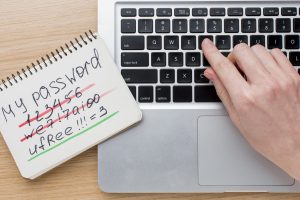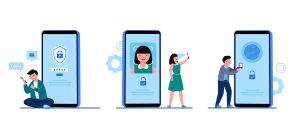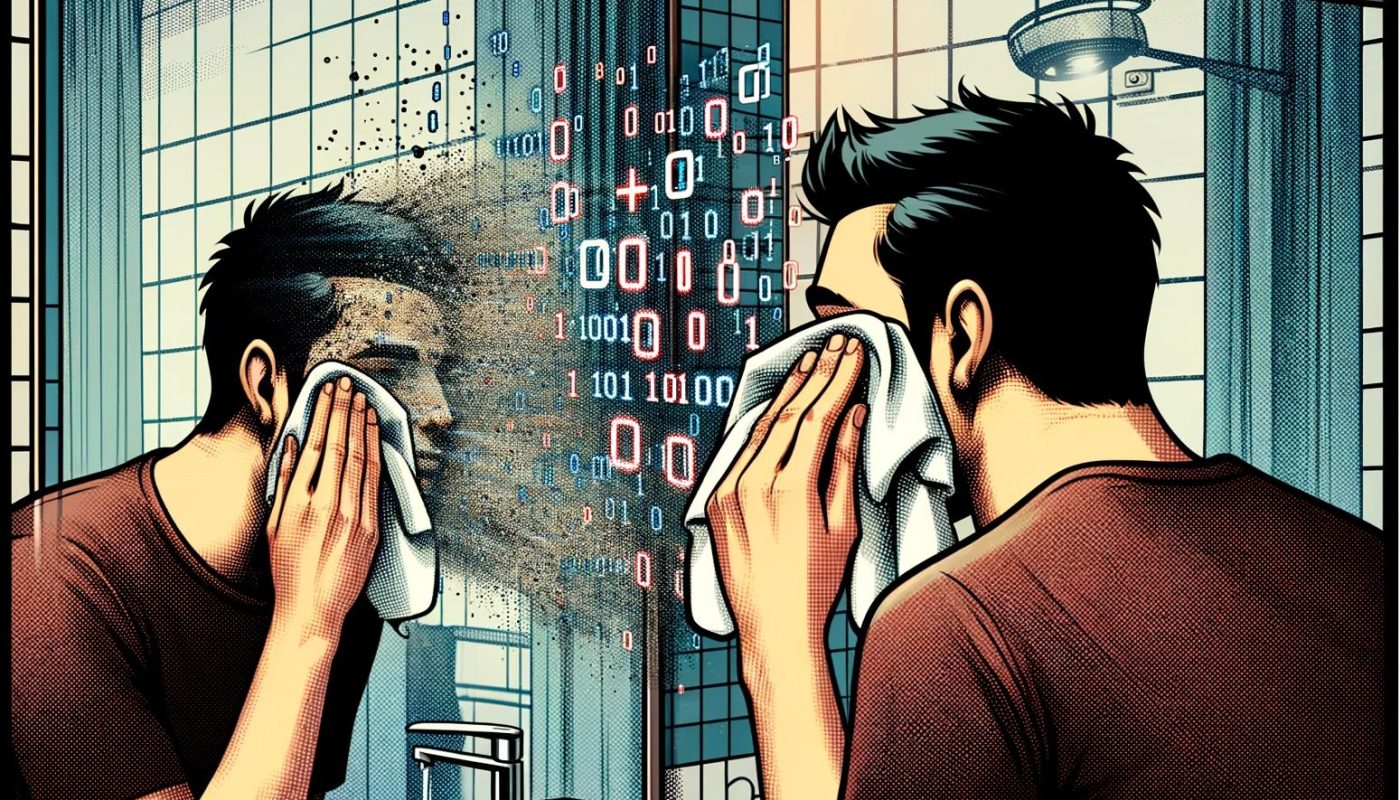In an era where cyber threats are increasingly sophisticated, protecting your online identity is not just a necessity, it’s a responsibility. Cyber hygiene encompasses the practices and steps individuals take to maintain system health and improve online security. Lets find out how to protect your E-dentity.
These practices are akin to personal hygiene but for your digital life. This article aims to guide you through fundamental yet effective strategies for enhancing your cyber hygiene.
“Cyber hygiene has to be memetically pounded into the intellectual DNA of the American population and continuously reinforced by peer pressure.”
Scott, J., Institute for Critical Infrastructure Technology
What is Cyber Hygiene
Cyber hygiene refers to the routine, foundational measures individuals should take to protect their digital information. Like brushing your teeth or washing your hands, cyber hygiene practices, when performed consistently, significantly reduce the risk of threat and infection to your digital identity. The concept extends beyond personal security to include practices that help protect others, considering how interconnected our online activities are.
In a business context, cyber hygiene is even more critical. Companies deal with a vast array of sensitive data, including customer information, financial records, and intellectual property. Poor cyber hygiene practices within a business can lead to data breaches, financial loss, and damage to the company’s reputation. Implementing strong cyber hygiene protocols protects not only the business’s data but also safeguards the data of its customers and partners. Furthermore, in an era where businesses are increasingly subjected to regulatory requirements regarding data protection, maintaining good cyber hygiene ensures compliance with these laws and regulations, thereby avoiding legal and financial penalties. Here are 6 advice for good cyber hygiene.
1. The Art of Crafting Robust Passwords
The first line of defense in cyber hygiene is creating strong, unique passwords for each online account. A strong password is akin to a complex key that is hard to replicate; it should include a mix of upper and lower-case letters, numbers, and symbols, and should avoid common words, phrases, or easily guessable information like birthdays or anniversaries. The longer and more complex the password, the more secure it is against brute-force attacks, where hackers try numerous combinations to crack it.
Using the same password across multiple platforms is akin to having one key for every lock; if one is compromised, all are at risk. Therefore, each account should have its own unique password. This might seem overwhelming, but this is where a password manager becomes invaluable. A password manager securely stores and organizes your passwords, often generating strong passwords for you and automatically filling them in when you log in to websites and apps. This not only bolsters your security but also relieves the mental load of remembering each complex password.

Moreover, be aware of the security questions you choose. Opt for questions whose answers cannot be easily found or guessed, and consider treating their answers like additional passwords – unique and not easily deduced. Regularly updating your passwords and avoiding sharing them are also key practices in maintaining strong password hygiene. By prioritizing strong and unique passwords, you create a robust foundation for your overall cybersecurity strategy.
Tree ways attacker will break your password
- Brute Force Attack: This is a trial-and-error method used to decode encrypted data such as passwords. The attacker systematically tries every possible combination of characters until the correct one is found. This method can be time-consuming and is less effective against strong, complex passwords.
- Dictionary Attack: Unlike brute force attacks, dictionary attacks use a pre-arranged list of likely password phrases, such as words found in a dictionary. This method is based on the tendency of many users to choose common words, phrases, or simple variations of them (like adding a number at the end) as their passwords. Dictionary attacks are generally faster than brute-force attacks but are less effective against passwords that are not simple words or commonly used phrases.
- Phishing: This is more of a social engineering technique rather than a direct hacking strategy. In a phishing attack, the attacker tricks the user into giving up their password willingly. This is often done by sending a fraudulent email or message that appears to be from a legitimate source, such as a bank or a known contact, asking the user to enter their login details on a fake website that looks authentic. Since the user is willingly entering their password, it doesn’t matter how complex or secure it is; once entered on the fake site, the attacker gains access to it.
2. Keep your Software up-to-date
Regularly updating your software is essential. Updates often include patches for security vulnerabilities that have been discovered since the last version to avoid Zero-day attacks. Delaying updates leaves you exposed to known risks. Enable automatic updates where possible to ensure you’re always protected with the latest security features.
3. Be Wary of Phishing Attempts
Phishing attacks, where cybercriminals impersonate legitimate entities to steal sensitive data, are increasingly common. Be cautious with emails requesting personal information, even if they appear to come from a trusted source. Verify the authenticity of requests through direct contacts and never click on suspicious links. If you want to learn more about phishing have a look at this past article: The Ultimate Guide to Protecting Yourself from Phishing Attacks in 2024.
https://youtu.be/hrpkZqzhwbM?si=4zGa5aDXoz8S23gm
4. Secure Your Wi-Fi Network
In today’s increasingly remote and digital work environment, securing your home Wi-Fi network is more crucial than ever, as it serves as the backbone of your home office and gateway to your professional and personal digital world. An unsecured Wi-Fi network is akin to an open door for cybercriminals, providing them with an easy access point to intercept your personal and work-related information. To safeguard your network, it’s crucial to use strong encryption standards. The latest standard, WPA3 (Wi-Fi Protected Access 3), offers improved security features over its predecessors, making it harder for hackers to crack your network’s encryption.
Furthermore, consider hiding your network’s name, known as the Service Set Identifier (SSID). By not broadcasting your SSID, you make it less visible to nearby hackers and casual snoopers. While this doesn’t make your network invisible, as determined hackers can still detect hidden networks, it adds an extra layer of obscurity, reducing the likelihood of opportunistic attacks. Equally important are setting a strong password for your Wi-Fi network and ensuring that your router’s firmware is up-to-date. As explained earlier.
Implementing these measures transforms your Wi-Fi network from a potential liability into a fortified digital fortress, significantly enhancing your overall cyber hygiene and protecting your sensitive information from unwanted intrusions.
5. Use Two-Factor Authentication
While two-factor authentication (2FA) can sometimes feel like an annoying extra step, its importance in protecting your online accounts cannot be overstated. 2FA adds a crucial extra layer of security beyond your password. In this method, even if a hacker manages to discover your password, they would still need a second factor—usually a code sent to your phone or generated by an app—to gain access to your account.

This second factor acts as an additional barrier, ensuring that only someone with access to both your password and your personal device can log in. Common forms of 2FA include text message codes, authenticator apps, or even biometric data like fingerprints or facial recognition. While receiving a text or opening an app to log in might seem like a minor inconvenience, this step is a small price to pay for the substantial increase in account security it provides.
In a world where data breaches are becoming more frequent, 2FA is no longer just a recommendation; it’s a critical component of personal and professional cyber defense. By embracing this practice, you significantly reduce the risk of unauthorized access to your accounts, safeguarding your sensitive information from potential cyber threats.
6. Regular Data Backups
Regular data backups are a fundamental aspect of robust cyber hygiene, crucial for both individual users and businesses alike. Consistently backing up important data to an external drive or a cloud service acts as a safety net, ensuring that in the event of a cyberattack, system failure, or accidental deletion, your critical data is not irretrievably lost. For individual users, this means safeguarding personal memories, important documents, and other irreplaceable information. For businesses, the stakes are even higher; data is often the lifeblood of the company, encompassing customer information, financial records, proprietary research, and other vital operational data.
In a business context, regular backups are not just a security measure but also a strategic necessity. The loss of data can lead to significant operational disruptions, loss of customer trust, legal repercussions, and in severe cases, can threaten the very survival of the business. Implementing a robust backup strategy, ideally with both local (external drives) and remote (cloud services) components, ensures business continuity and resilience in the face of cyber threats.
Moreover, it’s important to ensure that these backups are performed regularly and systematically. Automation of backup processes can help maintain consistency and reduce the risk of human error. Additionally, regularly testing these backups is crucial to ensure they work as expected when needed.

For both individuals and businesses, regular data backups are not just a reactive defense strategy against potential cyber threats but are a proactive step in securing the continuity and integrity of their digital existence. In today’s digital age, where data is a valuable asset, regular backups are an indispensable part of a comprehensive cyber hygiene regimen.
Conclusion
Navigating the digital age demands vigilant cyber hygiene to protect our online identity. Strong, unique passwords, cautiousness against phishing, secure Wi-Fi networks, two-factor authentication, and regular data backups are not just recommendations, but necessities for personal and business security. These practices safeguard against cyber threats, preserving personal data and business integrity. In embracing these habits, we fortify our digital security and contribute to a safer online community. As the digital landscape evolves, so must our commitment to maintaining robust cyber hygiene.



